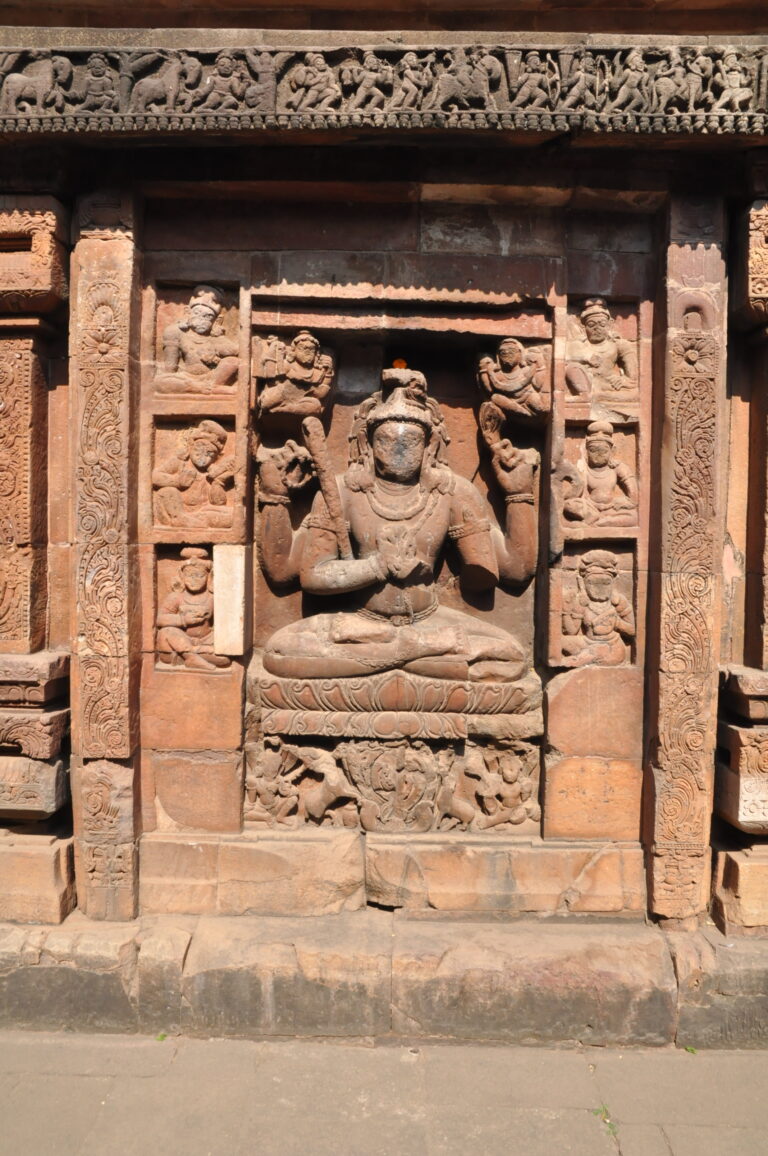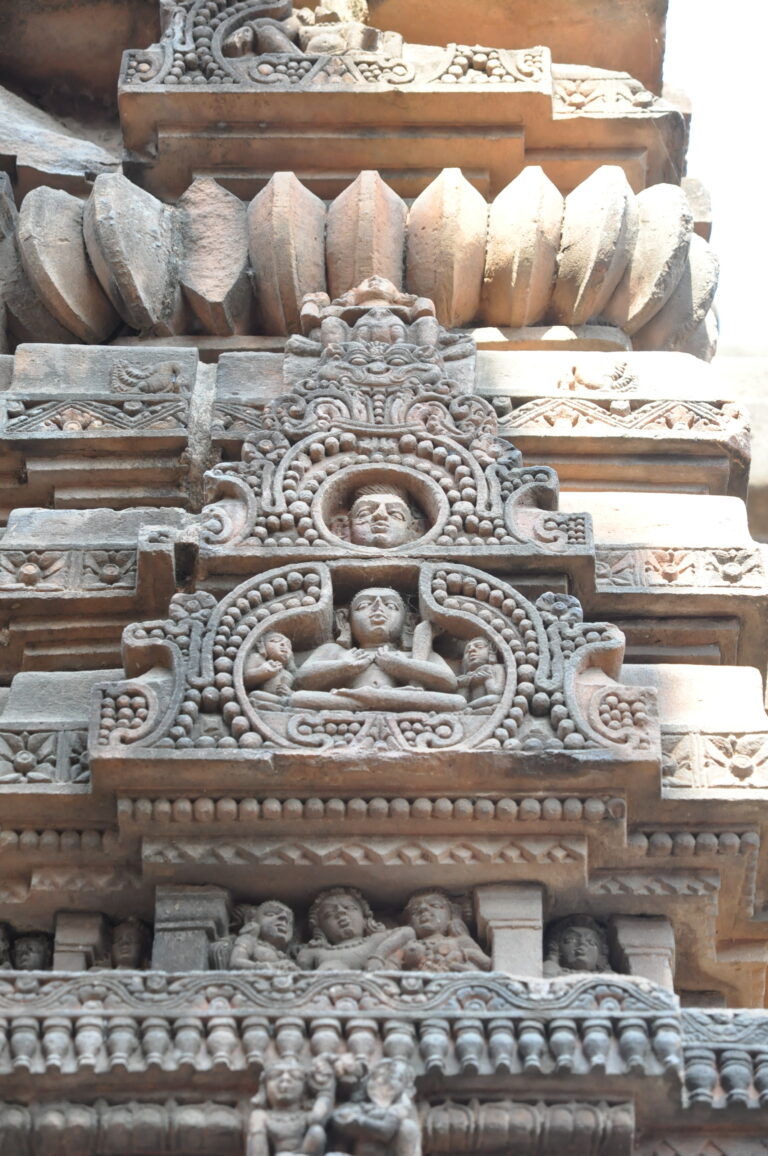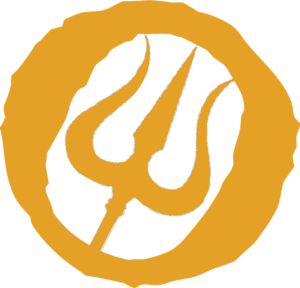
In January 2023, I travelled to Odisha to explore the links between the representation of Lakulīśa and the Buddha as teachers. The overlap in iconography between these two images suggests that the image of the teaching Buddha was used as a model for the image of Lakulīśa as a teacher. It seems that this image of Lakulīśa became popular in the 8th century CE and the image can be found at many Śaiva temples in Bhubaneswar.
The Śiśireśvara temple, for example, has two images of Lakulīśa as a teacher. A large image (image 1) can be found in the centre niche on the South side of the jagamohana.

A smaller image (image 2) can be found on the vimāna of the same temple.

This image strongly resembles an image of the teaching Buddha that I spotted at the ruins of the Buddhist monastery of Udayagiri, 80 km northeast of Bhubaneswar (image 3).

The strong resemblance between the images of the Buddha and Lakulīśa as teachers raises some interesting questions about the Buddhist-Śaiva dynamics in the early medieval period in East India. Why did the Śaivas want a deity that looked very much like a well-known representation of the Buddha?
The images of Lakulīśa as a teacher in Odisha show him with his hands in dharmacakramudrā and often portray Lakulīśa with elongated ears. Some of the images even have the hair in short curls with a uṣṇīṣa, and other Buddhist elements, such as two deer, are often found at the base of the images.
Another example of a teaching Lakulīśa (image 4) can be found above the entrance of a well next to the Mukteśvara temple. In this image, Lakulīśa is surrounded by eighteen commentators. If there would not have been a club and a liṅga, one would easily mistake the image for a Buddha image.

In the coming months, I will analyse the pictures I made in Odisha and investigate how the development of the image of Lakulīśa as a teacher relates to the Buddhist-Śaiva dynamics in early medieval East India.
Lucas den Boer (Ghent University)

